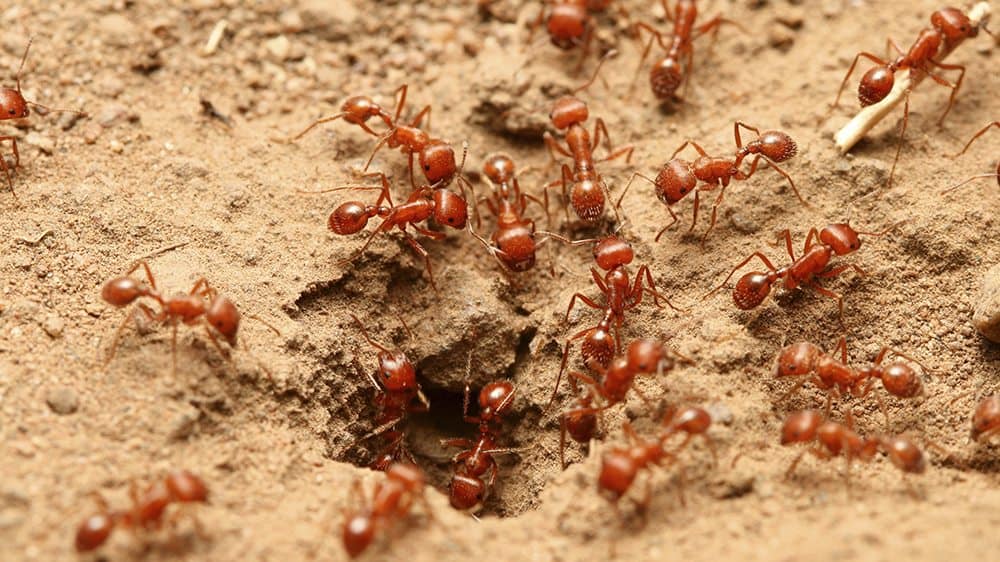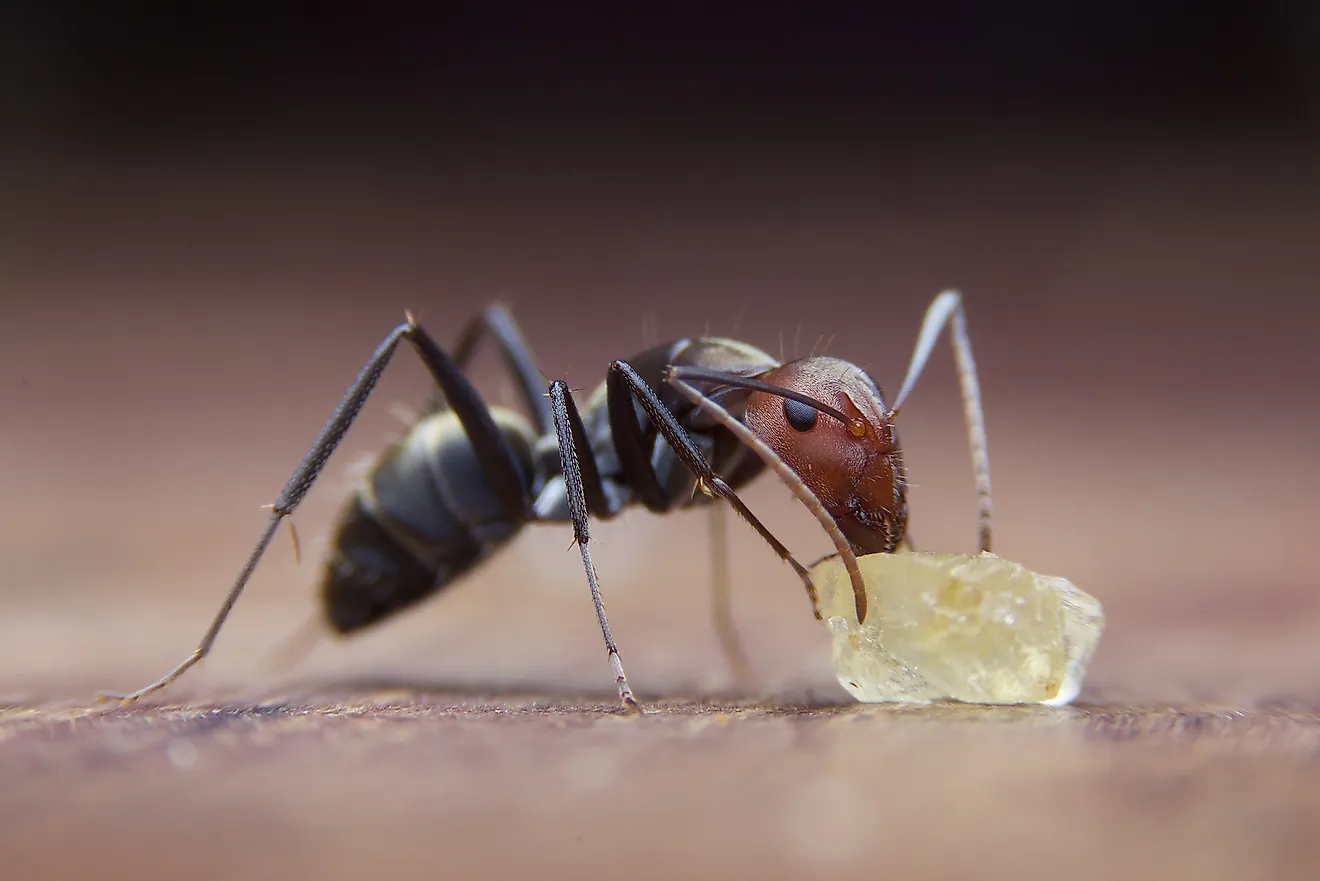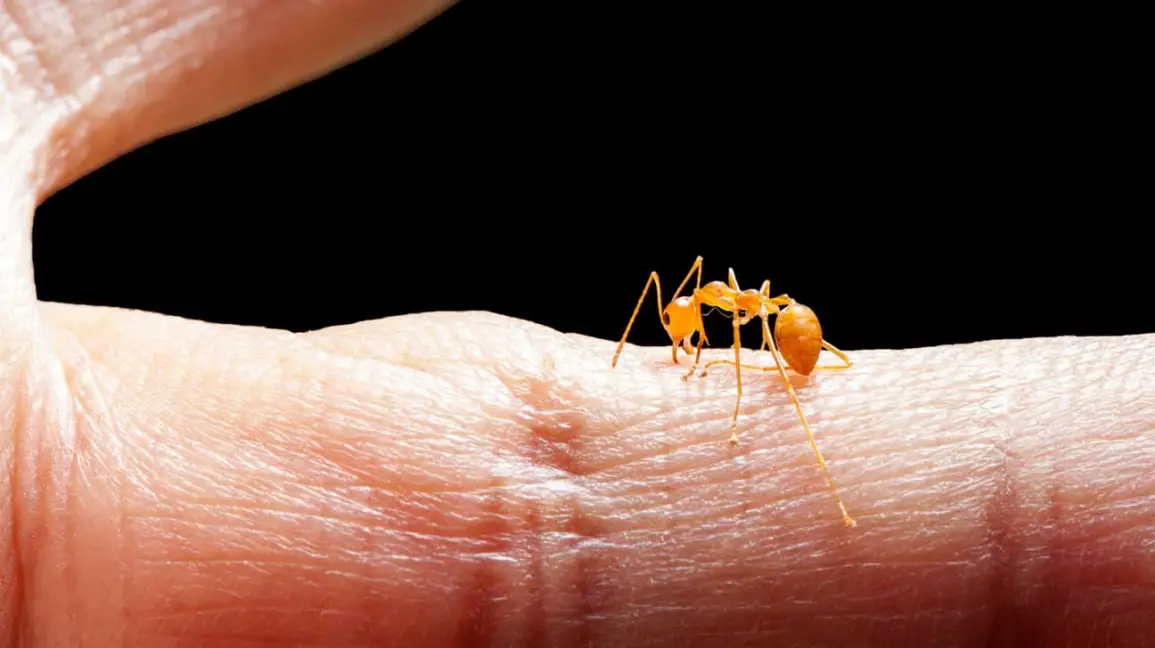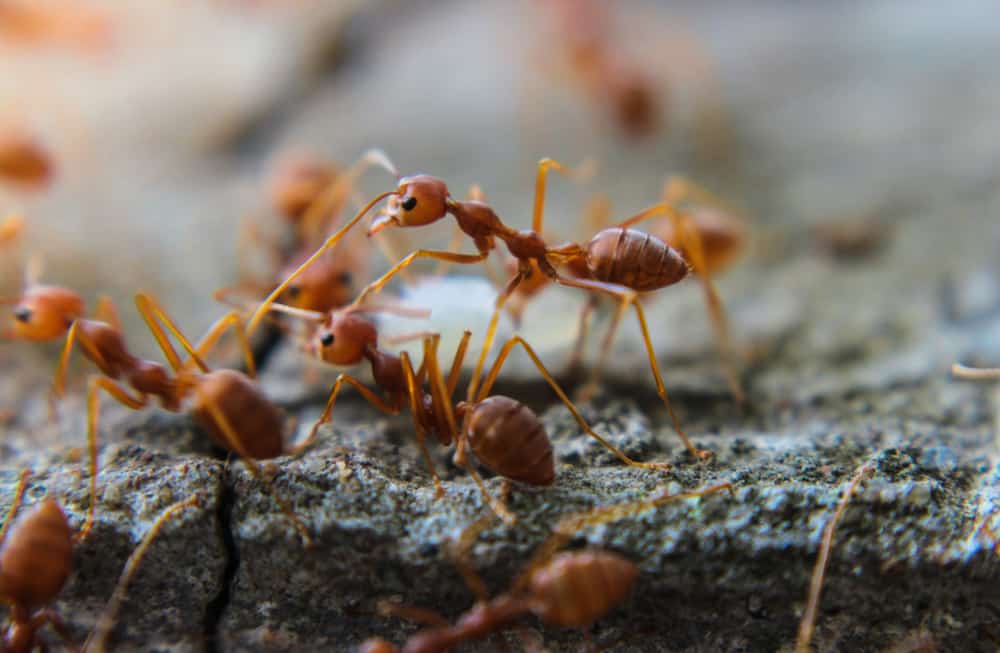There are over 12,000 ant species in the world but few are more famous and fearsome than the dreaded fire ants. These bright red invertebrates are incredibly troublesome pests for households, businesses, and farms alike, and they are often very difficult to get rid of once the little insects have infected your property. So, let’s go over what do fire ants eat, why are they everywhere, and how to deal with them?
Fire ants habitats

When talking about fire ants, we should first acknowledge that there are over 20 separate fire ant species out there. That being said, they do share very similar characteristics between them which is why most people talk about all of them at once.
The most famous of the 20ish fire ant species is known scientifically as Solenopsis Invicta or a red imported fire ant. These are one of the most invasive, disruptive, and dangerous ant species on the planet and they are very widespread too.
They are called “imported” largely because they originated in South America but got spread across the globe, including the United States and Canada, Europe, Asia, Australia, and Africa. That happened mostly by accidental “importing” via ships and planes of worker ants, larvae, and so on.
As for their specific habitats – you can find a fire ant mound virtually anywhere which is a big part of the problem. Only the driest or coldest parts of the world are inhospitable for this invasive insect so ant mounds pop anywhere nearby a suitable food source. It’s not uncommon for numerous fire ant mounds to spring up right next to each other too, often as many as dozens or hundreds of mounds per acre.
Having fire ant mounds pop up so close to one another can seem counterintuitive as they would compete for resources and often even fight each other. And, indeed, ant wars are a thing. However, in an environment that’s abundant in resources, building lots of nests close to each other still makes sense as it means little traveling time for the new queen until it can establish a nest as well as better utilization of resources in an area.
Ideally – for the fire ants – the ground will be relatively warm and moist but more moderate conditions can suffice too if there’s enough food around. Even the foundations of a house can make for a suitable habitat for a fire ant colony which suits them just fine as there’s plenty of easy food to find inside the house too.
What do fire ants like to eat?

Fire ants eat virtually anything and everything that has the necessary proteins and carbohydrates they need to survive. This can include honeydew, soybean, corn, your leftover egg, lipids, sweets, sorghum, other agricultural crops, and animal carcasses on the streets or in the fields.
Fire ants can also hunt for food with some of their typical prey including earthworms, aphids, all manner of other insects big and small, and even small birds, reptiles, rodents, and other mammals. Even something as big as a baby deer can be fair game for fire ants, that’s how much of a danger they pose even for vertebrates.
This hyper-effective omnivore nature of the fire ant is another big reason for its amazing adaptability. Together with the highly adaptable fire ant mounds, these pests can thrive in various places and under various conditions. Unfortunately, it’s also what gets fire ants so drawn to our human habitats and cities.
Why are there fire ants near me?
Human cities and rural areas alike give fire ants the two things they need to thrive – suitable habitat and plenty of food. The former can take the form of not just moist ground such as lawns and farmland but it’s also logs and stumps, unfinished construction sites, uncleaned trash piles, or just the very foundations of our homes and the soft wood in them.
In terms of food, there’s even more abundance. Our trash cans are full of food, our parks and lawns are full of other insects to prey on, our streets are full of dead animals to feast upon, and our houses are full of food to scavenge. So, for fire ants, moving into areas populated by humans is always a good idea.
The danger of fire ants

Unlike many other ant species, fire ants are more than just annoying. Instead, much like bees and wasps, fire ants have powerful stings that they use both defensively and offensively. While most other ant species only have their strong jaws to use as weapons, fire ants mostly use their mandibles for feeding and grabbing, and the stinger on their backsides as weapons.
So, while the bites of fire ants aren’t a big issue, the fire ant stings carry potent venom that can cause
When would fire ants attack a human?
As aggressive as they are, fire ants aren’t “man-eating predators”. They are scavengers and they only attack large mammals such as ourselves when they feel threatened – either personally or that their nest is threatened.
The issue is that we often threaten them by accident – by walking or sitting near fire ant mounds in parks or by playing in our own back yards, for example. In such cases, getting a sting on the calves or the hands is not an uncommon problem.
The other big cause of the clash between fire ants and humans is when we’re actively trying to get rid of fire ant mounds that are close to or inside our property. Fortunately, we have enough indirect or long-distance methods for dealing with ant mounds at this point so bites and stings aren’t that common in those cases.
What does a fire ant sting feel like?
Fire ants don’t have the strongest venom in the animal kingdom or even among all insects but their venom is still surprisingly potent for an ant and can cause lots of pain even for an adult human being thanks to the venomous alkaloids delivered with every sting. These stings are often fatal for many small animals, especially when delivered in mass.
However, for people, the fire ant’s sting usually only results in some pain – often strong – redness, itchiness, and a bit of swelling. There is also often a blister – or a pustule – that forms some 6 to 24 hours after the sting. The pain feels like a burning sensation hence why we’ve called them “fire ants”. The pain and itchiness soon subside, however, and the pustules too disappear after a few days, sometimes leaving a bit of a scab or scarring behind.
In some people, the symptoms are more severe, however. For those allergic to insect stings, the ant’s venom can result in breathing difficulties, nausea, throat swelling, heart rate increase, vomiting, and even shock. Such severe allergic reactions necessitate immediate medical attention or the victim can have long-lasting issues and in rare cases – even fatal consequences. Be especially careful with small and/or allergenic children around ant mounds.
How to get rid of fire ants?
Signs
The signs of a fire ant invasion are very simple – you’ll notice their small mounds raising up to 20 inches (or 50 cm) above ground or you’ll just notice the little red ants running around.
One of the first things fire ants do when they enter new territory is erecting their nests. Most of the nest is underground too as the mound is just the “entrance”. So, your first and main sign really is the mere presence of little red ants around you.
How to deal with them?
If you leave a fire ant infestation unaddressed for too long you are going to have to call pest control. Otherwise, stuff such as ant baits, repellents, and insecticides can work when used correctly. Do keep in mind, however, that most simple ant baits and repellents will only have limited use – anything that doesn’t directly kill the ant queen and deal with its nest is just a stop-gap solution.
So, unless you want to have to call pest control – or use some heavy-duty insecticides yourself – prevention is the name of the game. Make sure that you keep your property clean of any debris ants can use as nests, as well as of any leftovers or food storage they can raid.
Plug up any holes in your exterior walls and windows too and solve any potential moisture issues such as leaks as those can quickly attract fire ants and other pests.
Conclusion
Fire ants aren’t the worst pest to have to deal with but they are quite troublesome in their own right. If left unchecked, a fire ant infestation can spiral so out of control that it can become unmanageable by simple means.
Fortunately, unlike carpenter ants or termites, fire ants don’t do that much structural damage to our property. However, they can quickly turn yards unusable, they can ruin gardens and farmland, they can cause lots of physical pain, and they can even invade our homes en mass when given the chance as there’s plenty to eat for a fire ant under our roofs.
All this makes deterring fire ant infestations essential as it can often be difficult to spot them in time and get rid of them.
